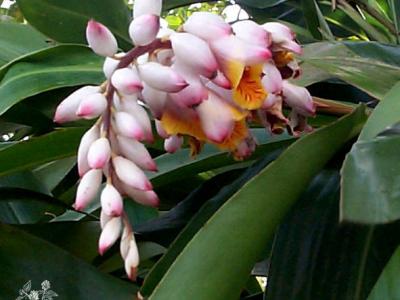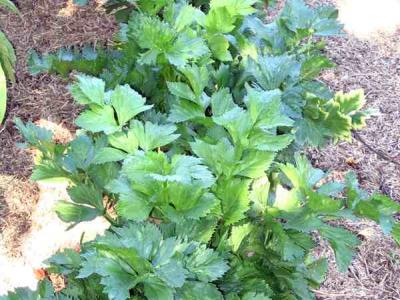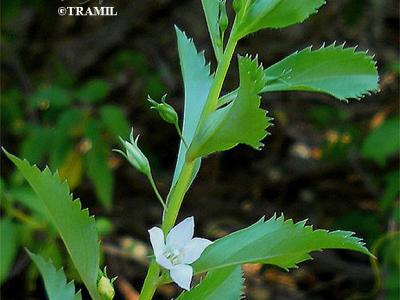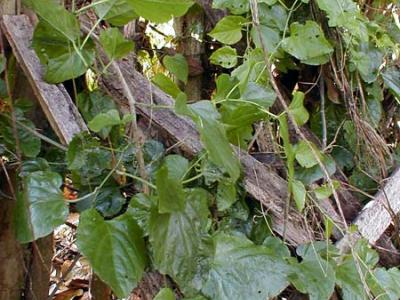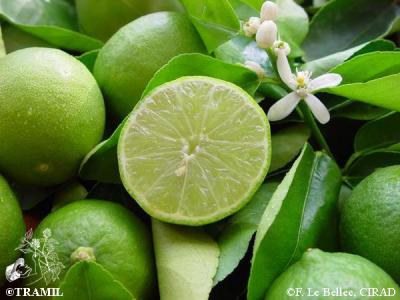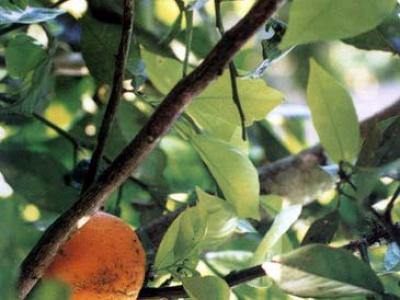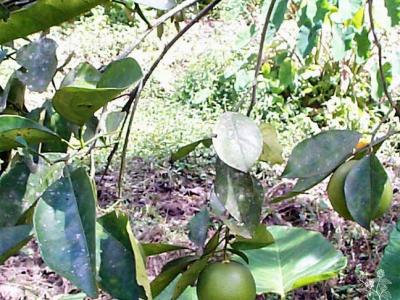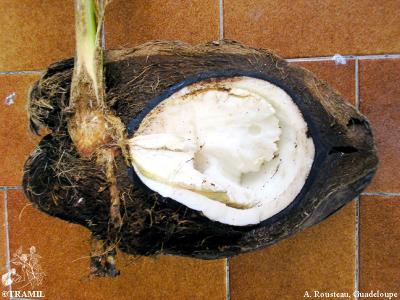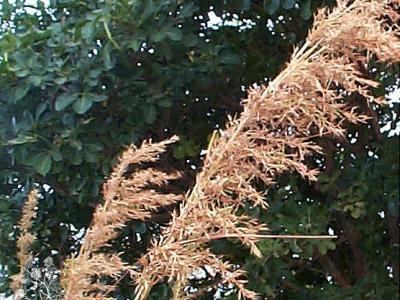(In territories with significant traditional TRAMIL use)
Martinique:
- atoumo
leaf, decoction, taken orally1
According to the information available:
The use for flu is classified as REC based on the significant traditional use documented in the TRAMIL surveys, the toxicity trial and the scientific information published.
If deterioration is observed in the patient or the flu persists for more than 7 days, seek medical attention.
Not for use during pregnancy, breastfeeding or in children under 12 years.
For flu:
prepare a decoction with 30 grams of chopped leaves in 4 cups (1 litre) of water; boil for 5 minutes. Cool, strain (filter) and drink 1 cup 3 times a day21.
Preparations must never be stored for more than 24 hours, even if refrigerated.
1 LONGUEFOSSE JL, NOSSIN E, 1990-95
Enquête TRAMIL. Association pour la valorisation des plantes médicinales de la Caraïbe AVPMC, Fort de France, Martinique.
2 DUNG NX, CHINH TD, RANG DD, LECLERCQ PA, 1994
Constituents of the flower oil of Alpinia speciosa K. Schum. from Vietnam. J Essent Oil Res 6(4):433-434.
3 PRUDENT D, PERINEAU F, BESSIERE JM, MICHEL G, BRAVO R, 1993
Chemical analysis, bacteriostatic and fungistatic properties of the essential oil of the atoumau from Martinique (Alpinia speciosa K. Schum.). J Essent Oil Res 5(3):255-264.
4 POOTER HLD, ABOUTABLE EA, EL-SHABRAWY AO, 1995
Chemical composition and antimicrobial activity of essential oil of leaf, stem and rhizome of Alpinia speciosa (J. C. Wendl.) K. Schum grown in Egypt. Flavour Fragrance J 10(2):63-67.
5 LUZ AIR, ZOGHBI MGB, RAMOS LS, MAIA JGS, SILVA ML, 1984
Essential oils of some Amazonian Zingiberaceae, 3. genera Alpinia and Rengalmia. J Nat Prod 47(5):907-908.
6 BEZERRA MAC, LEAL-CARDOSO JH, COELHO-DE-SOUZA AN, CRIDDLE DN, FONTELES MC, 2000
Myorelaxant and antispasmodic effects of the essential oil of Alpinia speciosa on rat ileum. Phytother Res 14(7):549-551.
7 GOTTLIEB OR, KOKETSU M, MAGALHAES MT, GUILHERME S MAIA J, MENDES PH, DA ROCHA AI, DA SILVA ML, WILBERG VC, 1981
Essential oils of Amazonia.VII. Acta Amazonica 11:143-148.
8 VICTÓRIO CP, ALVIANO DS, ALVIANO CS, LAGE CLS, 2009
Chemical composition of the fractions of leaf oil of Alpinia zerumbet (Pers.) B.L. Burtt & R.M. Sm. and antimicrobial activity. Revista Brasileira de Farmacognosia 19(3):697-701.
9 FUJITA T, NISHIMURA H, KABURAGI K, MIZUTANI J, 1994
Plant growth inhibiting alpha-pyrones from Alpinia speciosa. Phytochemistry 36(1):23-27.
10 LIAO MC, ARAKAKI H, LI YP, TAKAMIYAGI A, TAWATA S, ANIYA Y, SAKURAI H, NONAKA S, 2000
Inhibitory effects of Alpinia speciosa K. Schum on the porphyrin photooxidative reaction. J Dermatol 27(5):312-317.
11 OBATA T, SAWABE A, MORITA M, YAMASHITA N, MATSUBARA Y, 1995
Several steroids and phenylpropanoid glycosides isolated from leaves of getto (Alpinia speciosa K. Schum). Yukagaku 44(11):1012-1014.
12 VICTÓRIO CP, LAGE CL, KUSTER RM, 2009
Flavonoid extraction from Alpinia zerumbet (Pers.) Burtt et Smith leaves using different techniques and solvents. Eclética Química 34(1):19-24.
13 BOUCOURT E, MARTÍNEZ MJ, MOREJÓN Z, 2010
Evaluación de la actividad antimicrobiana del extracto acuoso de las flores frescas de Alpinia zerumbet. Informe TRAMIL. Laboratorio Central de Farmacología, Facultad de Ciencias Médicas “Dr. Salvador Allende”, C. Habana, Cuba.
14 BOUCOURT E, MARTÍNEZ MJ, MOREJÓN Z, 2010
Evaluación de la actividad antimicrobiana del extracto acuoso de las partes aéreas frescas de Alpinia zerumbet. Informe TRAMIL. Laboratorio Central de Farmacología, Facultad de Ciencias Médicas “Dr. Salvador Allende”, C. Habana, Cuba.
15 UPADHYAY A, CHOMPOO J, KISHIMOTO W, MAKISE T, TAWATA S, 2011
HIV-1 integrase and neuraminidase inhibitors from Alpinia zerumbet. J Agric Food Chem 59(7):2857-2862.
16 CHAVERRI M, GARCÍA-GONZÁLEZ M, 2013
Toxicidad aguda dosis repetida, en ratones, de la decocción liofilizada de hoja de Alpinia zerumbet. Informe TRAMIL. LIPLAMED. Depto. de Fisiología, Escuela de Medicina, Universidad de Costa Rica, San Pedro, Costa Rica.
17 DE ARAUJO PF, COELHO-DE-SOUZA AN, MORAIS SM, FERREIRA SC, LEAL-CARDOSO JH, 2005
Antinociceptive effects of the essential oil of Alpinia zerumbet on mice. Phytomedicine 12(6-7):482-486.
18 MENDONÇA VL, OLIVEIRA CL, CRAVEIRO AA, RAO VS, FONTELES MC, 1991
Pharmacological and toxicological evaluation of Alpinia speciosa. Mem Inst Oswaldo Cruz 86(Suppl2):93-97.
19 VIEIRA JEV, BARROS GSG, MEDEIROS MC, MATOS FJA, SOUZA MP, MEDEIROS MJ, 1968
Pharmacologic screening of plants from Northeast Brazil. II. Rev Brasil Farm 49:67-75.
20 VARGAS JHA, CARVALHO JCT, 2010
Study of the efficacy and clinical safety of Alpinia speciosa (JC Wendl.) K. Schum crude extract on arterial hypertension. International J of Pharmaceutical Sciences Review and Research 4(1):27-33.
21 LONGUEFOSSE JL, 1995
100 Plantes médicinales de la Caraïbe. Martinique: Gondwana Editions. p37.


